Orthodontic Conditions We Treat
Nu Smile Aligner® Corrects Simple to Complex Ortho Issues
Do you want to straighten your teeth solely for aesthetic purposes? Or does your dental misalignment increase your risk of cavities, jaw pain, and other oral health problems? In either case, the Nu Smile Aligner system may be your ideal solution. This innovative orthodontic treatment can correct most types of misalignment in a discreet, convenient, and totally affordable way. Let’s talk more about some of the specific orthodontic conditions we treat.
Overbite
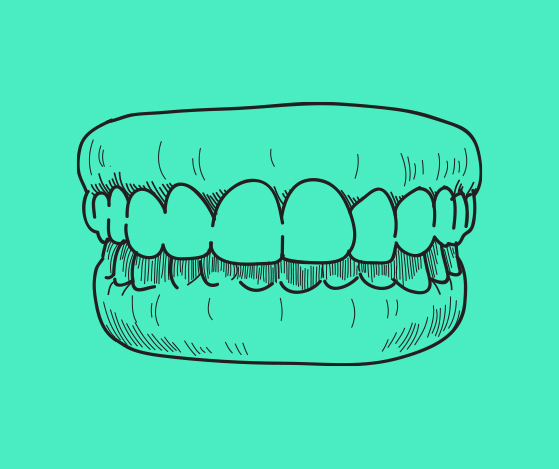
Overbite is a term that describes a condition wherein the top teeth overlap the bottom teeth when the mouth is closed. Nu Smile Aligners can gently shift the teeth and, perhaps along with attachments and other treatments, train the jaw to rest in a position that provides you with a more harmonious bite.
More About What an Overbite Is
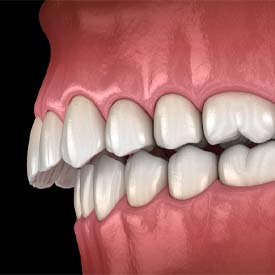
As noted above, an overbite occurs when the top teeth overlap the bottom teeth when the mouth is closed. This issue is extremely common. In fact, nearly 70% of children exhibit signs of an overbite, according to data collected by the American Dental Association. About 8% of the population has a severe overbite, with 6mm or more of horizontal space between their upper and lower teeth. The overage overbite is 2.9mm.
Many cases of overbite are genetic. However, lifestyle factors can also contribute to the problem. Habits like nail biting, thumb-sucking beyond the age of 3, extended pacifier use, and tongue thrust can all play a role in the development of an overbite.
Problems Caused by an Overbite

For people with a slight overbite, they may experience very minor symptoms — or perhaps even no symptoms at all. Many of these individuals choose not to pursue orthodontic treatment because it would not make a significant difference in their appearance or oral health.
Larger overbites, though, can cause serious issues, including:
- Speech difficulties
- An increased risk of gum disease
- A heightened risk of tooth decay
- Breathing problems
- Jaw pain (temporomandibular joint dysfunction — TMD — may occur)
- Pain or difficulty while chewing
There are also aesthetic consequences to take into consideration. Counterintuitive to what the name implies, an overbite does not stem from an upper jaw that extends too far forward. Rather, the lower jaw is too far back. This can cause the chin to look small and result in an extra-soft jawline.
Correcting an Overbite

Clear aligners can correct many cases of mild to moderate overbite. When you visit Dr. G and our team for your consultation, we will evaluate the positioning of your teeth and jaw to determine whether the Nu Smile Aligner system is right for you. If it is, we will plan your treatment and fabricate your custom aligners.
The aligners will shift your teeth into their proper positions. Used with attachments, they can also train your lower jaw to rest where it belongs, thereby helping to reduce or even eliminate your overbite. Depending on the severity of your overbite and your compliance with treatment, you might start to notice a difference in your smile in just a few months. For more serious cases, it can take over a year of treatment to produce final results.
Of course, Nu Smile Aligners are not the only clear aligner treatment that can address on overbite. Invisalign, SmileDirectClub, and Byte may all accept overbite cases. Why, then, should you choose our system? It is more affordable than competitors , uses state-of-the-art-technology, and is 100% local. Our team can’t wait to see you when you come in for your consultation !
Underbite
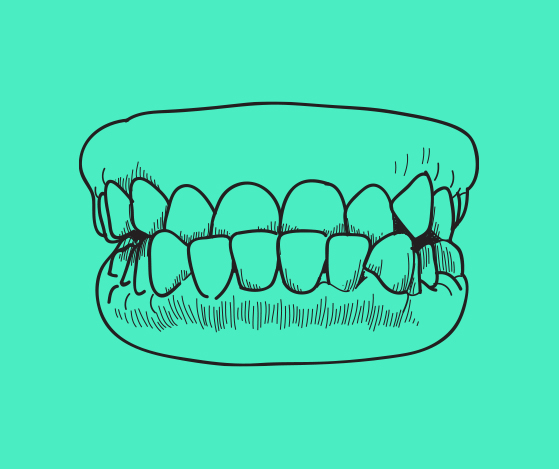
An underbite is a condition wherein the bottom front teeth protrude beyond the top front teeth when the mouth is closed. Not only does an underbite adversely affect facial aesthetics, but it can also lead to a range of oral health problems. Nu Smile Aligners are often able to shift the teeth and jaw in a way that makes underbite a thing of the past. Continue reading below to learn more about underbite and how our treatment may be able to help.
More About What an Underbite Is
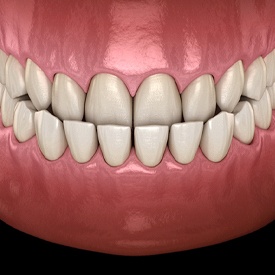
Underbite is a type of malocclusion (bad bite) that affects roughly 1 in 20 people. Although not as common as an overbite, this problem is just as serious. Like any type of orthodontic problem, an underbite can range in severity from mild to quite serious. In a mild overbite, the top and bottom teeth might almost be touching. In severe cases, the space between them can be large enough that the person’s face appears to be expressing emotions that they are not actually feeling.
What Problems Can an Underbite Cause?

Left untreated, an underbite can cause a range of problems, including:
- Social misunderstandings. A severe underbite may make people misread your facial expressions.
- Difficulty chewing and speaking. It may be challenging to consume certain foods, and your pronunciation may not be as clear as you would like it to be.
- Premature wear and tear on the teeth. An underbite causes the top and bottom teeth to contact each other at an incorrect angle, which can lead to damage.
- Chronic mouth breathing. This may contribute to persistent bad breath and dental decay.
- Temporomandibular joint dysfunction (TMD). This disorder of the jaw joint can cause significant pain, headaches, migraines, and general musculoskeletal misalignment.
Can Nu Smile Aligners Fix an Underbite?
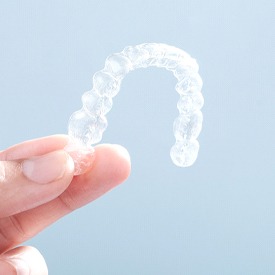
Clear aligners are able to address many cases of mild to moderate underbite. They can do so by promoting proper teeth and jaw positioning. In some cases, extra accessories may be necessary to train the jaw to rest in the right place. If an underbite is particularly severe, surgery might be part of the overall treatment plan.
Crossbite
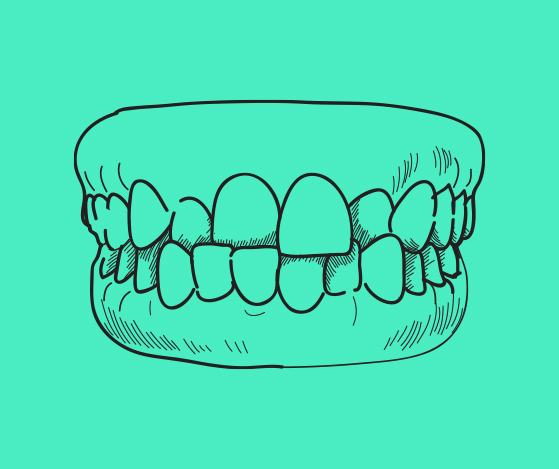
Crossbite occurs when some of the top teeth rest inside the bottom teeth when the mouth is closed. Nu Smile Aligners shift the teeth with the goal of making them fit perfectly together, thus creating a more comfortable bite and a lower risk of issues like chipped teeth and bruxism (teeth grinding).
Causes of Crossbite
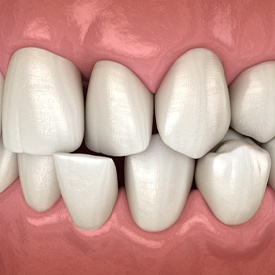
Like other forms of malocclusion, a crossbite can occur for numerous reasons. It might simply be the result of genetics; if your family members suffer from misaligned teeth, you are more likely to experience similar issues.
Other possible contributors to crossbite include:
- Delayed loss of baby teeth.
- Abnormal eruption of the permanent teeth.
- Bad habits that were not corrected early enough. This includes things like prolonged thumb sucking as a child or abnormal swallowing patterns.
What Problems Can a Crossbite Cause?

Depending on its severity, a crossbite can contribute to numerous problems. Because the teeth hit each other at odd angles, they are more likely to break, chip, and suffer premature wear and tear. Gum recession can also occur, and some individuals find that little notches form above the gumline. Such issues can, in turn, lead to further problems, including bone loss in the jaw, heightened dental sensitivity, and painful gum problems.
Additionally, a crossbite can adversely affect your smile’s aesthetics. Some individuals with this problem hesitate to smile in public or in photographs because they are self-conscious about the state of their teeth. A crossbite may even lead to lopsided jaw growth or shifting of the jaw to one side, which can further affect your facial appearance.
It is best to correct a crossbite as soon as possible, so if you are suffering from this problem, we urge you to schedule a consultation with the Nu Smile Aligner team right away.
How Nu Smile Aligners Work to Correct a Crossbite

Depending on the severity of your crossbite and other factors, clear aligners might be the perfect way to straighten your teeth, achieve a more comfortable bite, and prevent future dental problems. When you come in for your consultation, Dr. G and our team will evaluate the positioning of your teeth and your bite and learn more about your oral health before we make a treatment recommendation.
After your aligners are fabricated in our local facility, you can look forward to an easy treatment experience. Not only are Nu Smile Aligners more affordable than big name brands like Invisalign, but they are also designed for comfort, discretion, and precise tooth movements.
You will simply wear your aligners as directed and visit us periodically for checkups. In a matter of months, you should begin to notice a difference in your smile (total treatment time varies from case to case — we’ll be able to give you an estimate for how long your Nu Smile course will take when you visit us for your consultation). Depending on your circumstances, you might require additional orthodontic accessories along with Nu Smile to completely correct your bite and achieve the healthy, well-aligned smile that you deserve.
Gap Teeth
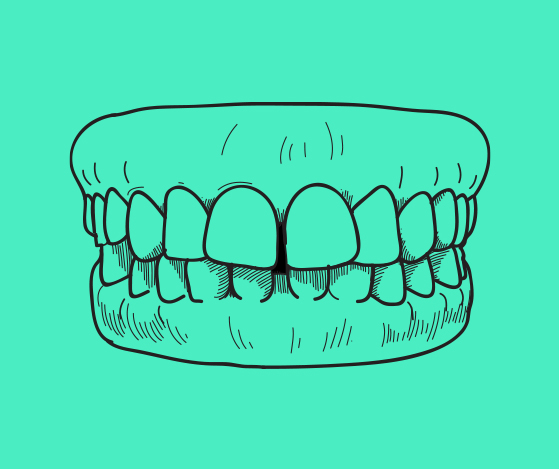
Some people regard a gap between their front teeth as a signature look, but if a gap doesn’t appeal to you, the Nu Smile Aligner system may be able to help. It can bring your teeth closer together, thus protecting your gum tissue and enhancing your smile’s aesthetics.
Causes of Gap Teeth
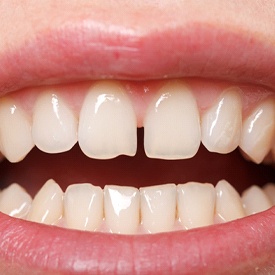
Gap teeth, which may also be called gapped teeth or spacing issues, can be caused by a number of different factors, including:
- For some people, extra space between their teeth is simply a matter of the genes they inherited from their parents.
- Myofunctional problems. If you sucked your thumb for a prolonged period of time during childhood, or you struggled with other myofunctional disorders, you could have a number of orthodontic problems, including gap teeth.
- A thick frenum. There is a piece of tissue between the upper lip and the upper gums called a frenum (or frenulum). If it is too thick, it can prevent the upper teeth from assuming their proper positions right next to each other.
- A large jaw. If your jaw is too large, it allows for extra space between the teeth.
Why Are Gap Teeth a Problem?

For some people, gap teeth are not a problem. A few famous personalities, such as Mike Tyson, even regard a gap between their teeth as a signature look that they would never choose to change. For others, however, gap teeth are an issue that needs to be corrected. They can cause a few different problems, including:
- Feelings of self-consciousness. If you dislike the way the gap between your teeth looks, it may prevent you from smiling and speaking freely when you are in public.
- Speech issues. Extra space between the teeth can affect the way the tongue interacts with them, which can lead to unclear pronunciation of some words.
- A bad bite. If you have a large gap between your front teeth, it can affect the positioning of all of your other teeth, leading to a misaligned bite, crooked teeth, and other orthodontic problems.
How Nu Smile Aligners Work to Correct Gap Teeth

If you would like to say goodbye to the gap between your teeth, come visit Dr. G and our team. During your consultation, we will evaluate your smile before we determine if the Nu Smile clear aligners system is right for you. If it is, we will design your treatment plan and get to work on fabricating your aligners.
Once your aligners are ready, you will wear each one for about two weeks before moving onto the next. They will apply pressure to your teeth to move them closer together, closing unsightly gaps and providing you with a healthier, more attractive smile.
Of course, the Nu Smile system is not the only option you have for closing a gap between your teeth. Invisalign, ClearCorrect, SmileDirectClub, and Byte may all be capable of producing similar results. However, we firmly believe that Nu Smile is the best choice because it features an attractive price, high-quality materials, and the support of a top-notch dental team. Talk with us today to learn how it might help you achieve your ideal smile!
Open Bite
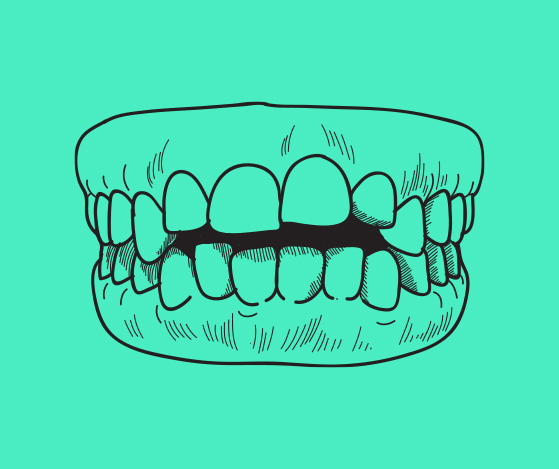
An open bite is a form of malocclusion (bad bite) that occurs when either the front or back top and bottom teeth do not contact one another, even when the mouth is closed. Open bite can be a complex issue, but in many cases, Nu Smile Aligner is able to address it. Read on below to learn more about this issue, the problems it can cause, and how clear aligners may be able to help.
What Exactly Is an Open Bite?
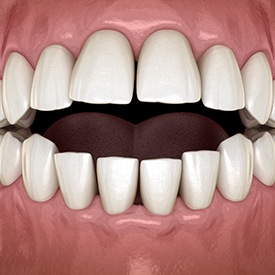
There are two primary types of open bite: An anterior open bite is when the top and bottom front teeth do not touch each other, even when the back teeth are making contact. A posterior open bite is just the opposite; it occurs when the back top and bottom teeth cannot touch each other.
Open bites are relatively rare, affecting less than 1% of the U.S. population. When an open bite does occur, it may be due to genetics. Your DNA can influence the growth of your jaw as well as the way your teeth develop. Another possible cause of an open bite is poor oral habits during childhood. For example, an open bite may occur in someone who sucked their thumb of fingers for an extended period of time. Other possible causes include tongue thrust (the tongue rests too far forward in the mouth), chronic mouth breathing, and excessive pacifier use.
Problems Caused by an Open Bite

The most common problem caused by an open bite is difficulty eating. If you have an anterior open bite, it might be challenging for you to bite into certain foods. For example, instead of being able to take a chunk off an apple, you might have to slice the apple and move it directly to your back teeth in order to chew. If you have a posterior open bite, chewing certain foods may be difficult or even impossible, severely limiting your food choices.
Another issue associated with an open bite is facial aesthetics. You may be embarrassed to smile, and even when your lips are closed, the shape of your face may be affected by the malocclusion.
Treating an Open Bite
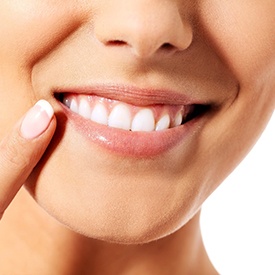
Whether Nu Smile can treat your open bite depends on the specifics of your situation. If you have a severe open bite or a posterior open bite, you may need to explore other treatment options. However, if you have a relatively minor anterior open bite, clear aligners may work for you. Invisalign, SmileDirectClub, and Byte may all be effective. However, the many advantages of the Nu Smile system make it the most desirable option. Dr. G and our team will assess your teeth during your consultation before we recommend your next steps.
If Nu Smile is right for you, we’ll fabricate your aligners, and you’ll wear them for 20 – 22 hours each day. As you move from one aligner to the next, your open bite should gradually diminish and eventually disappear.
Would you like to learn more about Nu Smile Aligners, their cost, and the conditions they can treat? Our team is ready to answer your questions! Contact us today to get started on your path to a healthier smile.
Crooked Teeth
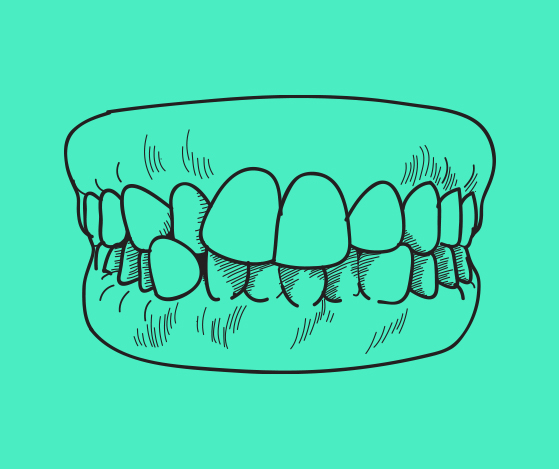
“Crooked teeth” is a general term that can refer to a range of orthodontic problems. Often, it refers to crowded teeth, rotated teeth, or teeth that protrude at an angle. All of these issues have the potential to damage oral health and adversely affect facial aesthetics. Fortunately, Nu Smile clear aligners are often able to correct many cases of crooked teeth.
Causes of Crooked Teeth
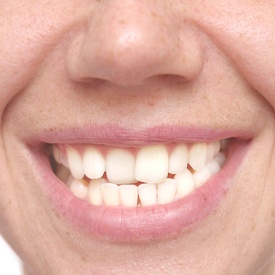
Teeth may be crooked for a number of reasons, including:
- This disorder causes extra teeth to grow in the mouth. People who suffer from it may have one, a few, or many extra teeth.
- A malformed jaw. A small jaw may be caused by genetics. In other cases, habits during childhood, such as prolonged thumb sucking or an improper resting position of the tongue, interfere with proper jaw development.
- Early loss of baby teeth. If baby teeth fall out or are extracted too early, it can cause the permanent teeth to come in crooked.
- Other reasons. Some people naturally have crooked teeth. Poor oral care and inadequate nutrition during childhood may also contribute to misalignment.
Problems Caused by Crooked Teeth

According to one estimate, 9 out of 10 people have teeth that are at least slightly misaligned or crooked. Crooked teeth can be a mere aesthetic problem in some cases, but for many people, this issue poses a serious threat to their oral health and merits attention from a qualified dentist.
Some problems that may be caused by crooked teeth include:
- Difficulty with oral hygiene. Crooked and crowded teeth make it a challenge to brush and floss thoroughly. In turn, this can lead to bad breath, cavities, and gum disease.
- Speech problems. Crooked teeth can interfere with the way the tongue and teeth work together to produce clear speech.
- Broken and chipped teeth. Crooked teeth are often accompanied by malocclusion (a bad bite). These issues can cause the upper and lower teeth to contact each other at odd angles, increasing the risk of chips and breakage.
- Many people with crooked teeth feel very self-conscious about their smile.
How Nu Smile Aligners Work to Fix Crooked Teeth

Nu Smile Aligners are able to correct many cases of crooked and overcrowded teeth. Depending on your circumstances, you might need to have one or more teeth extracted before there is room in your mouth for orthodontic treatment. Once you complete any necessary preliminary treatments, Dr. G and our team will design and fabricate your custom aligners. They will gradually shift the teeth into their proper positions, leading to improved aesthetics, easier oral hygiene, and other benefits.
Of course, other clear aligner systems, such as Invisalign, ClearCorrect, SmileDirectClub, and Byte, may also be capable of correcting crooked teeth. However, we firmly believe that Nu Smile is the best choice. Our system offers predictable teeth-straightening, the personal support of a team of dental professionals, and an attractively low price. We encourage you to come in for your consultation so we can get you on the road to a healthy and confident smile!
Mix of Baby & Permanent Teeth
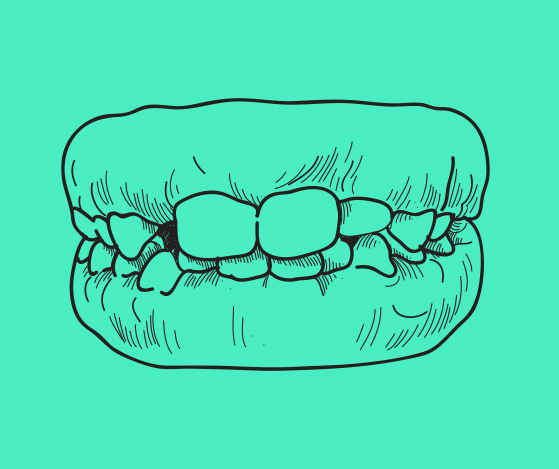
For children who have a mix of baby and permanent teeth, early orthodontic treatment can do much to guide their dental development and prevent their risk of long-term oral health problems. Nu Smile Aligner treatment is often a perfect solution for responsible youngsters who require some guidance for their developing teeth and jaw.
What Are Baby Teeth?
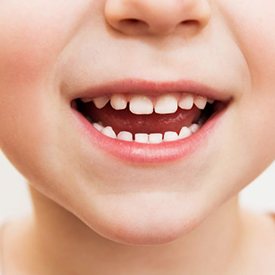
Baby teeth are often called primary teeth or milk teeth. Babies usually get their first tooth around the time they are six months old, and their teeth continue to erupt until they are around two years old. By the time they are around 6 or 7 years of age, a child’s primary teeth should begin to fall out so they can be replaced by permanent teeth.
What Complications Are Caused by Some Baby Teeth?
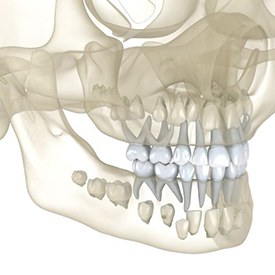
In some cases, a child’s baby teeth do not fall out when they should. They can interfere with the development of incoming adult teeth, which can lead to a misaligned bite, pain, overcrowded teeth, and even severe tooth damage that cannot be repaired.
If your child’s dentist identifies baby teeth that have overstayed their welcome, they are likely to recommend that those teeth be extracted. That can clear the way for incoming adult teeth and may prevent future orthodontic issues.
Of course, in some cases, orthodontic care is necessary. This can happen if the baby teeth are not removed at the right time or if there are some abnormalities with jaw growth that could lead to overcrowding or malocclusion.
How Nu Smile Aligners Can Help

Your child should have their first orthodontic checkup by the time they are 7 years old or so. Our experienced dental team can take some X-rays and visually evaluate the state of their teeth and jawbone to determine if everything is developing as it should. If we detect a problem, we can recommend your next steps.
Some young patients are eligible for Nu Smile Aligners. After any necessary extractions, the aligners can help to guide the development of your child’s teeth and jaw. As their baby teeth fall out, their treatment may need periodic adjustments. Also, keep in mind that, depending on your child’s age, they might need some extra help to remember to wear their aligners as much as necessary.
Once your child completes their treatment with Nu Smile, they may enjoy a number of benefits. Not only will their teeth be straighter, but they could enjoy a more functional bite, a more pleasing facial profile, and a reduced risk of sleep disordered breathing. Their chances of needing orthodontic treatment again in the future may also be greatly lowered.
